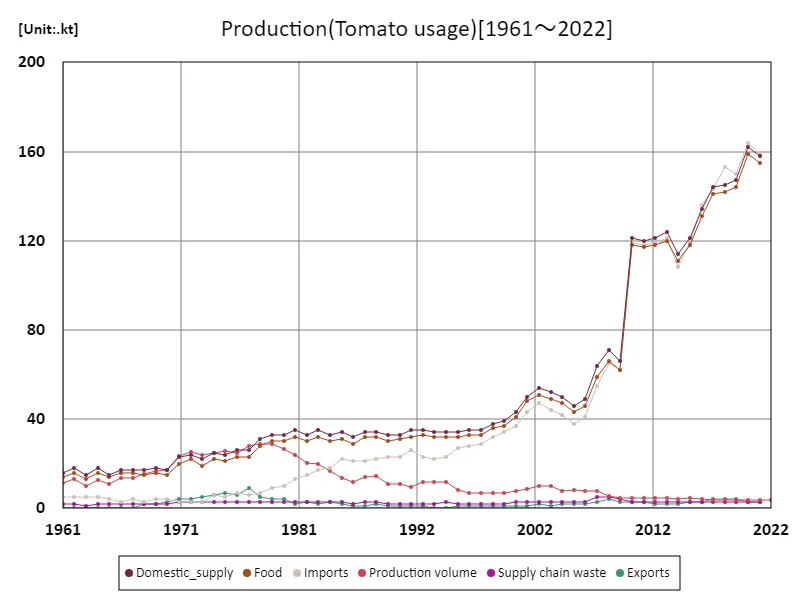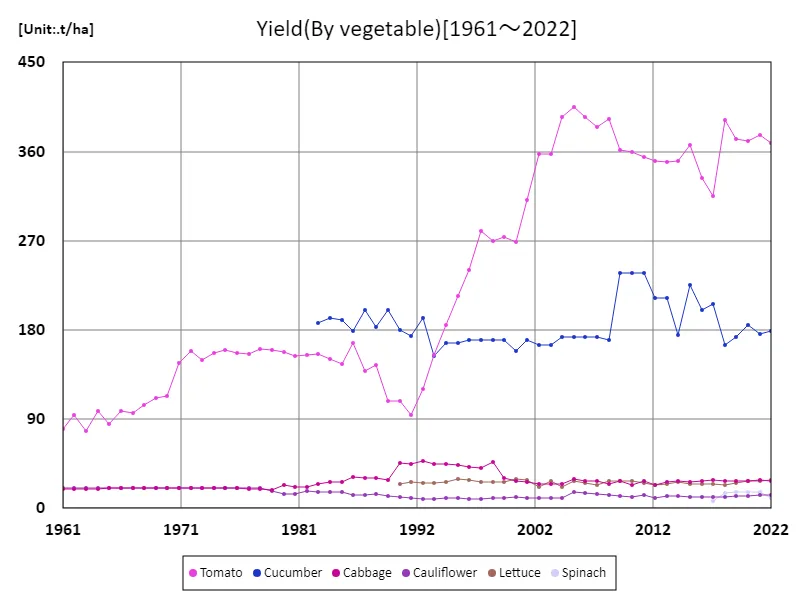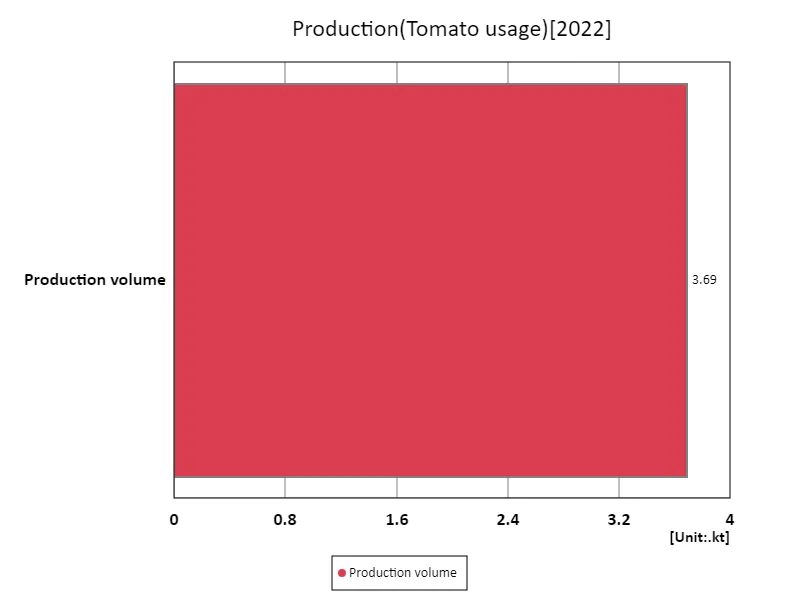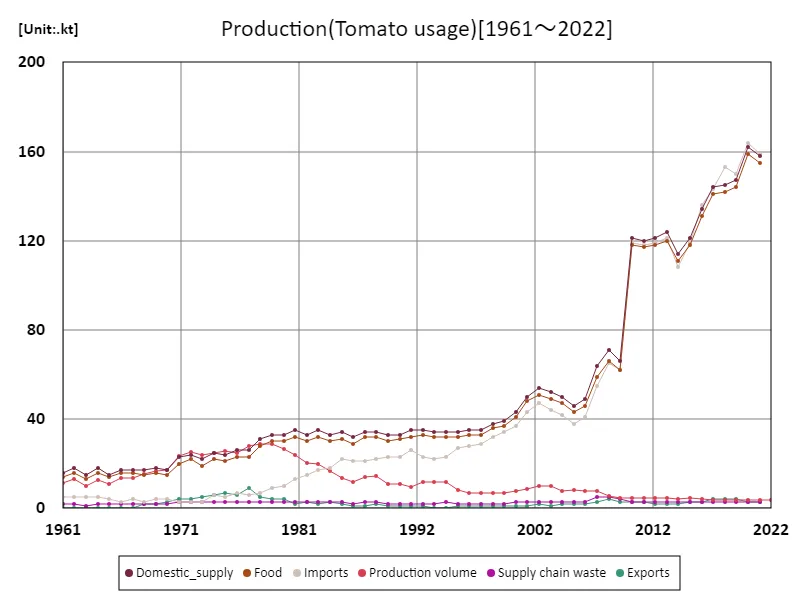Abstract
Irish vegetable production has remained stable in recent years, with cabbage being a major crop. According to the latest 2022 data, cabbage recorded the highest yield at 24kt, placing it in a key position compared to other vegetables. This trend has continued over the past few years, with cabbage production volumes remaining strong. In terms of land use, cabbage occupies large areas and ranks as one of the major crops in Irish arable land. When it comes to tomato production, if we divide it up by use, most are produced for consumption or processing in the market, and greenhouse cultivation is particularly popular. Data from 2022 shows that tomato production volumes are stable, with fine production adjustments being made according to use. Overall, vegetable production in Ireland is efficient, with economies of scale in certain products. In addition, production plans are made based on climatic conditions and market demand, and the amount of production for export is also on the rise.
Production (by vegetables)
Irish vegetable production has undergone significant fluctuations between 1961 and 2022. Cabbage is a prime example of this, recording a peak of 71kt in 1991, but production volume has since declined, falling to approximately 24kt, or 33.7% of that figure, in 2022. This decline can be attributed to agricultural diversification, changing consumer preferences and fluctuations in market demand. Despite the decline in cabbage production, vegetable production across Ireland remains stable due to growth in other crops. In particular, increased production of tomatoes and lettuce through greenhouse cultivation and the spread of modern cultivation methods are cited as factors contributing to this. Tomatoes are widely grown for the market and there is an increasing demand for processing. In addition, changes in climate and agricultural policies have also influenced production patterns, with the production areas for certain vegetables shrinking or shifting to other areas. Overall, Irish vegetable production is characterised by a gradual diversification and a move towards tailoring production to market needs.


The maximum is 164kt[2020] of Imports, and the current value is about 97%
Yield(by vegetable)
In Irish vegetable production, the tomato yield is a particularly noteworthy feature. In 2005, tomatoes recorded a peak yield of 405t/ha, but this has been decreasing every year since then, and in 2022 it will be around 369t/ha, which is 91.1% of that figure. This decline is likely due to advances in greenhouse cultivation technology that have led to more efficient production methods and management, but is also likely due to changes in other crops and market demand. Tomato production is supported by greenhouse cultivation adapted to Ireland’s climatic conditions and has developed specifically to meet the demand for high quality fresh and processing tomatoes. High peak yields reflect the introduction of efficient cultivation techniques and growing demand, but in recent years fluctuations in production costs and market prices have impacted production volumes. In addition, tomato cultivation has become increasingly geographically concentrated, with cultivation concentrated in certain regions. This has improved the production efficiency of greenhouse cultivation and made it possible to stabilize supply, but adjustments in response to market trends remain necessary. Overall, tomato yields are stabilizing but showing some fluctuations compared to past peaks.


The maximum is 405t/ha[2005] of Tomato, and the current value is about 91.1%
Land use (by vegetables)
In terms of land use in Ireland’s vegetable production in 2022, the area devoted to cabbage cultivation is noteworthy. Cabbage occupies the largest area, reaching 870 hectares. This is the largest area of land use for vegetable production in the whole of Ireland, indicating that cabbage remains the dominant vegetable crop. Additionally, although the area under cultivation of cabbage has remained stable or even slightly decreased over the past few decades, it remains an important crop. The overall average area is 345ha, which provides an indication of the area under most vegetable cultivation in Ireland. The total area is 2.07kha, and the proportion of vegetable production in the total cultivated area in Ireland has remained constant. This land use trend indicates that traditional crops such as cabbage still occupy large areas, while other vegetables are grown on a relatively small scale, and greenhouse crops such as tomatoes and lettuce in particular are concentrated in small areas. Overall, vegetable production in Ireland is characterised by efficient land use and flexible responses to fluctuations in demand and the market.


The maximum is 3.69kt of Production volume, the average is 3.69kt, and the total is 3.69kt
Tomato usage
Ireland’s tomato production, especially in 1961, was the largest import, reaching 164kt. During this period, tomatoes were mainly imported, and domestic production was probably limited. However, over time, domestic tomato production has increased with improvements in greenhouse cultivation techniques, reducing dependency on imports. In particular, tomatoes are widely consumed in the market, so stabilizing domestic production is an important factor for the food industry. In recent years, when it comes to tomatoes’ uses, the demand for them as food is particularly high, but production for processing also accounts for a certain proportion. Greenhouse cultivation is booming in Ireland and there is a growing market demand for quality tomatoes, particularly for eating and fresh tomatoes. Additionally, there is demand from the processing industry, with products such as purees and sauces being shipped for export. Irish tomato production is growing, reflecting advances in agricultural technology and changing market demands as the country moves away from being import-dependent and towards greater self-sufficiency. Overall, domestic production has increased and the tomato is now one of the key crops in Irish agriculture.


The maximum is 164kt[2020] of Imports, and the current value is about 97%



Comments